Sustainable Development Goals
The Sustainable Development Goals are 17 global objectives set by the United Nations to address social, economic, and environmental challenges by 2030.
Here’s how Thrive’s programs are addressing 14 of those goals…
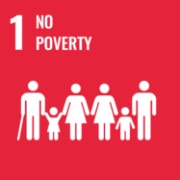
Life Gardens are working to address the poverty trap on multiple fronts, such as education, food security and other community-led development initiatives. The diffusion of marketable skills as well as the potential to secure additional income by selling any surplus food helps to fight extreme poverty (1.1). Multidimensional poverty is also addressed, with Life Gardens positively impacting levels of nutrition, child mortality and school attendance (1.2). All community members can have equal access to and ownership over Life Gardens as an economic and natural resource that is fully within their control and which can be used to independently and sustainably respond to local needs (1.4). Even under stressful environmental conditions and political instability, Life Gardens are able to continue producing large amounts of highly nutritious calorific food that a community can rely upon without being left vulnerable to external conditions (1.5). Life Gardens have the capability to become an adequate and predictable development program that can be deployed across the world to help end all forms of poverty (1.A). Thrive for Good effectively engages with the poor communities that are benefitting from Life Gardens through a gendered lens so that the program remains relevant to those that are utilizing Life Gardens to self-sufficiently reduce poverty (1.B).
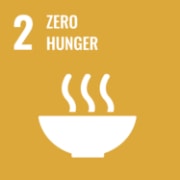
Undernourishment continues to threaten millions of people around the world and Life Gardens have the power to be a sustainable force in feeding the world’s growing population as well as reversing the rising trends in food insecurity. Due to the low-tech, low-cost, highly effective biointensive nature of Life Gardens, mass deployment of such initiatives on a global scale could contribute tremendously towards the goal of ending all hunger by 2030 and guaranteeing constant access for all to nutritious, calorie-adequate food (2.1). Malnutrition of pregnant and lactating mothers, in addition to children under the age of 5, can also be adequately addressed through mass Life Garden deployment (2.2). The knowledge behind Life Gardens would also contribute significantly towards the goal of sustainably doubling agricultural productivity, as biointensive gardens produce 2-6 times more food than traditional industrial agriculture is able to (2.3). Biointensive techniques focus on restoring the environment so communities have a higher degree of self-reliance even under more extreme climate conditions (2.4). Maintaining local ownership over seeds promotes genetic diversity and equitable access to the fundamental basis of Life Gardens: The crops being grown (2.5). Thrive for Good has a proven track record that supports the strong economic and social return on investment that Life Gardens offer (2.A).
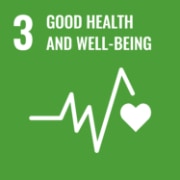
Across the world, there are inequities in terms of who is able to access what quality of healthcare. Thrive for Good tackles these inequities through the dissemination of nutritional and medicinal curricula, enabling participants to take control over their own health. Through Life Gardens, mothers are able to get access to the nutrients, vitamins and minerals that they need to support and safely give birth to a healthy child (3.1). Gaining access to adequate nutrition through a community-led Life Garden can also reduce the number of malnourished deaths occurring in children under the age of 5 and reduce the incidence and mortality rate of a whole range of communicable diseases (3.2; 3.3). Beyond reducing the mortality of communicable diseases, Life Gardens work to promote a mentally and physically healthy lifestyle, reducing the incidence of several non-communicable diseases (3.4). Decreasing the burden of communicable and noncommunicable diseases allows health infrastructure a chance to effectively develop in a way that is affordable for all (3.8). Natural fertilizers and pest management strategies are relied upon to cultivate crops in Life Gardens, reducing exposure to toxic chemicals (through both direct use and indirect environmental contamination) (3.9). The educational basis and self-reliant skills that are behind Life Gardens support the expansion of healthcare capacity in the global south by fostering an interest in medical knowledge and providing easily applicable tools that anyone can use to promote their own personal well-being (3.C; 3.D).
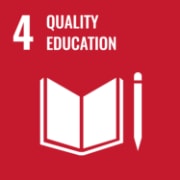
The United Nations calls attention to the fact that education can substantially empower upward socioeconomic mobility. Thrive for Good not only delivers high-quality educational curricula to communities participating in the Life Garden program, but children in Life Garden communities will also have better opportunities to attend and succeed in school. Organic Agricultural Trainers and the Thrive Institute are increasing the skill level of citizens (even the incarcerated) across the global south, fostering a growing base of human capital that can support the growth of good jobs (4.4). Everyone from the community is able to and is encouraged to participate in the Life Garden, establishing an open and inclusive learning environment from which all can benefit (4.5). Being able to read and write relies upon being able to attend school regularly with a mind that is capable of learning (4.6). The nutritional output of Life Gardens strengthens the immune system and the cognitive ability of the brain, removing barriers that stand in the way of children being able to learn how to read and write (4.6). Life Gardens are a form of sustainable community-led development and every individual who becomes involved in a Life Garden has an opportunity to pass this knowledge and personal engagement with practices of sustainable development on to others, magnifying the original impact (4.7). The values behind Life Gardens and Thrive for Good, as well as the international human rights regime, can also be circulated on an ever-increasing level as the knowledge of Life Gardens spread (4.7). Schools also have the opportunity to employ Life Gardens to meet the nutritional needs of their students (4.A). Finally, Thrive for Good offers scholarships so that any individual in the global south has the opportunity to lead development in their own community (4.B).
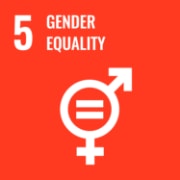
Sustainable development, in order to be successful, must include all genders. Involving a multiplicity of perspectives in a tolerant and respectful environment will make sure that the best ideas for development are brought forward, discussed and implemented. Furthermore, interweaving inclusivity throughout all public aspects of society influences how genders interact with and value one another. The effectiveness of Life Gardens are only maximized when all genders are allowed to actively participate in the program, are valued for their contributions, and do not face any discrimination for doing so (5.1). Life Gardens are a shared responsibility of the community and the family (5.4). Any and all work that goes into cultivating a Life Garden is respected and held in high esteem by members of the community (5.4). There are many opportunities for women to take on leadership roles and play a critical part of the decision-making processes when community discourse focuses on Life Gardens or other community-led development initiatives (5.5). At the core, Life Gardens are an enabling economic and educational resource that women can harness to become self-reliant, independent and confident (5.A; 5.B).
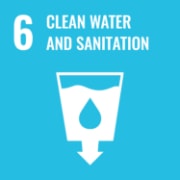
Inadequate access to clean water and sanitation threatens billions of lives around the globe. As a community-led development project, Life Gardens have the potential to spawn and empower other self-initiated responses to local needs, such as clean water projects (6.1). Larger water and sanitation projects, such as water wells, will not occur unless a solid foundation of social capital exists within the community (6.1). The financial savings that are realized when a community grows food for itself can also be reinvested in further social and human development projects (6.1). Communities are also given tools to effectively and safely manage the disposal of human waste through the use of compost toilets, which help to enrich the health of the soil (6.2). The risk of chemical runoff from Life Gardens is non-existent, as the program does not make use of synthetic fertilizers or pesticides, protecting the health of surrounding watersheds (6.3; 6.6). Biointensive gardening principles, which increase the aeration and carbon-sequestering potential of the soil, enable Life Gardens to efficiently use and retain any water that they receive, cutting down on the amount of water that is needed to maintain the crops that are under cultivation (6.4). The sustainable development that Life Gardens enables is only possible through the engaged participation of communities, as they need to be involved in the solution (6.B).
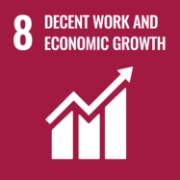
Maintaining rapid economic growth that is stable and able to withstand global shocks has been a distinct challenge for economies of the global south. This threatens the livelihood and per capita income of millions of families around the world. Surplus food from Life Gardens can be sold to support and boost per capita income (8.1). Utilization of local materials for Life Gardens as well as the skill-training programs provided by Thrive for Good help to support Small and Medium Enterprises (SMEs) financially and supply them with a source of skilled workers (8.3). Life Gardens emphasize environmental regeneration and protection, enabling the cultivation of highly nutritious food without any negative externalities impacting the environment (8.4). Well-nourished children are given greater chances at success in school and at finding employment, as they have been able to develop cognitively and get ill less frequently (8.6).
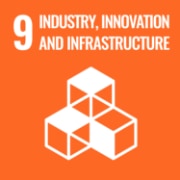
Sustainable development relies on innovative programs and resilient infrastructure. Life Gardens can be at the very base of a country’s infrastructure, providing food, supporting health and establishing a base of local transferable knowledge (9.1). Relying on local Small and Medium Enterprises (SMEs) for any material/equipment that a Life Garden needs supports SMEs and increases the chances that they will be able to gain access to formal markets and sources of credit (9.3). Life Garden curricula may also bolster interest in the medical and social sciences and encourage the creation of local master gardener hubs (9.B). With Thrive Institute, Thrive for Good is ready to capitalize on the increasing accessibility of the internet in the global south (9.C). Even without the internet, over 90,000 people are benefitting from the biointensive knowledge that Thrive for Good has disseminated across the developing world (9.C).
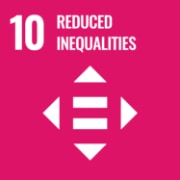
Inequality hinders development in the global south by excluding citizens (usually the most vulnerable) from meaningful opportunities to gain access to education and by limiting the rates at which the poor are able to rise out of the poverty trap. Therefore, a fundamental component of Life Gardens is ensuring that no one is left behind. Everyone from the community, regardless of their identity, is given the opportunity to access the economic and social benefits that a Life Garden holds (10.2). As a community-led development project, assembling a representative and inclusive decision-making environment is key to fulfilling local needs (10.6). When individuals are given a voice with Life Gardens, their ability to participate in other sectors of society is also enhanced (10.6). A magnitude of push factors behind migration are addressed through Life Gardens, reducing the rate of unsustainable rural-urban migration, which allows progress to be made on effectively resolving persisting levels of inequality (10.7). The social and economic return on investment offered by Life Gardens helps to encourage and make highly effective use of official development aid without creating a dependence (10.B).
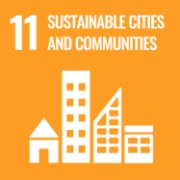
Urbanization has occurred rapidly over the past few decades and is not forecasted to slow down anytime soon. If urbanization is not conducted in a sustainable manner, inadequate infrastructure will exist to support the needs of urban inhabitants, fostering illness, poverty, inefficient use of resources, pollution and hunger. Installation of Life Gardens within urban areas is not only possible (Life Gardens require an extremely compact footprint and can still produce an immense amount of food from a small parcel of land), but also provides a high degree of food security for urban dwellers (11.1). Sustainable urbanization relies upon participatory urban planning and Life Gardens thrive when everyone from the community is actively involved (11.3). Droughts and other water-related challenges can be successfully navigated with a Life Garden, as nutritious food can be cultivated with less water using biointensive gardening principles (11.5). Urban residents will most likely still be able to feed themselves when adverse water conditions exist and the increases in economic and social capital that are associated with Life Gardens can be reinvested into community-led water and sanitation projects (11.5). Heightening environmental awareness is an essential component of the Life Garden program (11.6). Life Gardens add productive green space to the urban environment, benefitting air quality, mental health and physical well-being (11.6; 11.7). By establishing a clear connection between the productivity of Life Gardens and the health of the surrounding environment, Thrive for Good fosters a green mindset and teaches participants how to take care of the natural world around them (11.6). Unsustainable rural-urban migration can be effectively addressed through Life Gardens, boosting food security and climate resiliency for both urban and rural residents (11.A; 11.B).
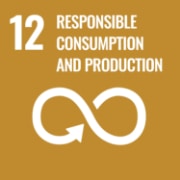
The global economy depends completely on the health and well-being of the Earth’s environment and ecosystems. Sustainable development can only be sustained if natural resources are used in an efficient, equitable and responsible manner. Soil degradation is a serious threat to future food productivity, but the biointensive gardening principles that are behind Life Gardens ensure that soil is used in an efficient and restorative manner (12.2). As Life Gardens relocate cultivation so that food is grown by the people who are eating whatever is produced, the availability and quantity of food can be better tailored to meet local needs (and demand if the surplus is being sold) (12.3). This helps to effectively combat food waste, as communities will only grow and put effort into the amount of food that they are going to consume (12.3). External food supply chains are not as sustainable as they do not have as much flexibility in terms of responding to local needs (12.3). Life Gardens do not depend on chemicals and the Thrive for Good curriculum instructs communities on how to effectively recycle organic and human waste (12.4; 12.5). Procurement of the equipment/materials for Life Gardens is linked to local supply chains and companies of all forms have the potential to advance their corporate social responsibility agendas by getting their employees involved in Life Gardens (12.6; 12.7). The use of fossil fuels is avoided and every Life Garden community is given full access to the empowering sustainable development techniques and knowledge that they need to become self-reliant (12.8; 12.C).
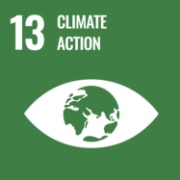
Climate change continues to threaten the most vulnerable populations on Earth. Intensifying extreme weather events and rapidly changing environmental conditions challenge the gains that have been made in sustainable development over the last few decades. Life Gardens are 100% controlled by the communities that benefit from them and come with a whole range of environmentally friendly techniques that can be adapted to conquer almost any growing conditions (13.1). Thrive for Good understands that without education on what one can do to protect, conserve and sustainably adapt to the surrounding natural environment, individuals and communities will never fully understand the implications of their interactions with the natural world (13.3). For example, increasing the organic matter found in an acre of soil by 1% can absorb up to 10 tons of carbon emissions from the atmosphere. The Life Garden program increases the climate resiliency and adaptive capacity of communities and marginalized groups (13.B).
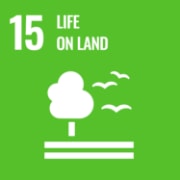
Without properly functioning ecosystems, human life will cease to exist. Every life necessity comes from the natural environment and if the natural environment loses the ability to replenish itself, then societies across the world will not be able to sustain their basic everyday needs. As biointensive gardening principles are used over traditional industrial agriculture techniques, Life Gardens are a sustainable use of terrestrial land that actually work to restore the natural environment (15.1). Reforestation is encouraged under the Life Garden program, as trees provide a whole host of benefits for gardens, crops and soil (15.2). Through double digging and the nurturing of healthy soil ecosystems, Life Gardens can work to reverse the global trends of soil degradation on a small, but impactful scale (15.3). Thrive for Good’s gardening curriculum depends on the health of the natural environment, so chemical use is limited, local plants/seeds are encouraged and insects and animals are tackled through non-intrusive pest management programs (15.5; 15.6). The inherent value of maintaining a healthy ecosystem is grounded in every crop that is cultivated in a Life Garden (15.9). Conservation of ecosystems across the global south is much more achievable if communities have the tools that they need to independently fulfill their unique needs in an environmentally conscious way (15.A; 15.C). Life Gardens empower such self-reliant, resilient, food-secure, green communities.
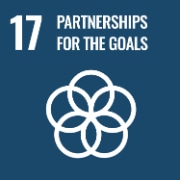
The United Nations affirms that the Sustainable Development Goals will only be realized through strong global partnerships and cooperation at all levels of analysis. Life Gardens are a community-led development program that facilitate meaningful relationships between multiple levels of development actors and support capacity-building on a whole array of human development outcomes (17.9). The operational structure of Life Gardens respects the sovereign capability and local knowledge that states and communities of the global south possess. Communities are able, and encouraged, to take full ownership over the independent operation of Life Gardens so that they are self-sufficient and can freely adapt Life Gardens to meet local needs (17.15). Thrive for Good has demonstrated that the Life Garden program can work within and foster public, public-private and civil society partnerships. Any actor of any size can become involved in the implementation and operation of a Life Garden, and our educational curriculums can be harnessed by private partners (JusTea), private non-governmental organizations or public agencies. These partnerships have long-term benefits in terms of food security as well as the nurturing of social capital (17.16; 17.17).
